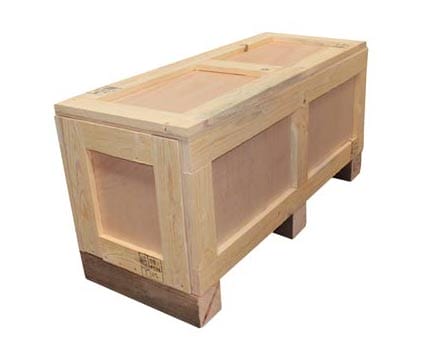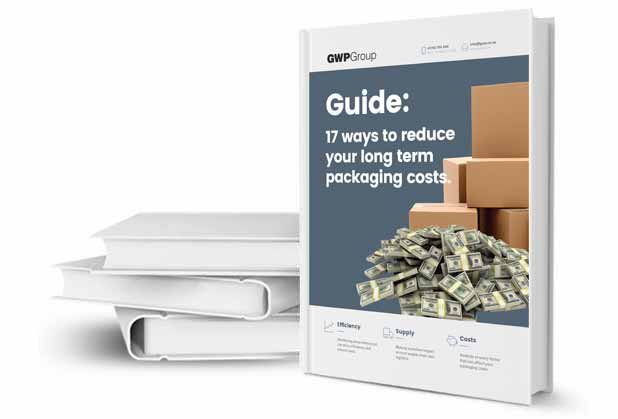Keeping your goods safe with export packaging
Maintaining protection throughout international shipping
Are you a business that exports machinery, electronics, or fragile goods internationally? Then, it is essential to ensure that your items are protected, compliant, and professionally presented as they travel across borders.
Export crating is protective packaging built from strong and protective wooden boxes or crates that safely package goods for international shipping. These crates are specially designed to protect items from damage during long-distance transport and to meet legal requirements for crossing borders.
In this guide, we’ll explore why export crating is essential for international shipping, how it keeps your goods safe, and what makes it a non-negotiable part of global trade.
Contents
Why is export crating essential for international shipping?
Keeping your products and your brand protected
International shipping is transporting goods via sea, air, and land. Sometimes goods will go through multiple modes of transport to arrive at their destination, often crossing thousands of miles and through varying climates and handling processes.
With so many touchpoints, ensuring that your goods arrive safely and in optimal conditions is essential.
Using the correct export packaging can mean the difference between smooth delivery and costly damage and is a critical step in preparing your goods for international shipping.
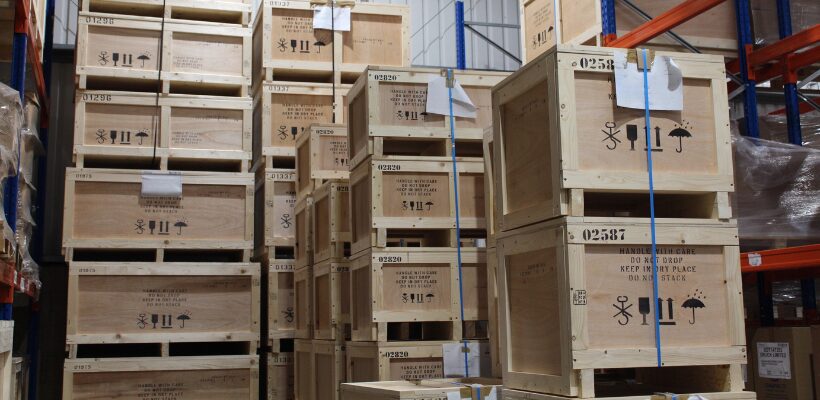
6 key reasons why export crating is essential
The main reasons businesses require suitable export crating are:
- Protection during transit.
- Compliance with international regulations.
- Efficient handling and stacking.
- Security.
- Custom fit for unique goods.
- Brand reputation and professionalism.
Why is export crating essential for international shipping?
Protecting your goods from physical damage
International shipping involves your goods travelling long distances and with multiple modes of transport and touchpoints, which increases the risk of damage to your products.
As such, reliable export crates are a key factor in maintaining product integrity, customer satisfaction and business reputation across global markets.
Export crating efficiently protects goods from physical damage, such as shock, vibration, or compression. It also protects against environmental factors like humidity, temperature changes, or saltwater exposure.
Without proper protection, even minor impacts or environmental stressors during transit can lead to broken parts, spoiled products, or delayed deliveries. This results in costly returns, dissatisfied customers, and potential damage to your brand’s reputation.
The types of crates used for export are specifically engineered to mitigate these risks, offering a dependable layer of protection that gives both exporters and recipients peace of mind.
Compliance and international regulations
Ensuring your shipment meets legal and safety requirements
Compliance and international regulations are critical considerations when shipping internationally with export crating, and while they seem complicated, you must follow them.
One of the most commonly used regulations is ISPM-15, an international regulation to prevent the spread of pests and diseases through any timber crates, cases, pallets, or other packaging. This regulation outlines which raw wood materials require heat treatment and requires them to be marked with the ISPM-15 stamp once they have been heat-treated.

The ISPM-15 regulation is used by the UK, US, and EU. Still, different countries may have import requirements, including materials, labelling, and documentation restrictions. So, you must be aware of the regulations for the country you export your goods to and ensure you are compliant.
Failure to comply with international regulations around timber packing crates could result in costly delays when your goods are rejected at customs and fines that could be up to five times the value of your goods.
To avoid these risks, work with experienced export packaging suppliers who are familiar with the latest compliance standards and can help ensure your shipments meet all legal requirements.
Handling and stacking ability
Maximise space and ensure easy loading
During international shipping, goods are frequently loaded and unloaded using forklifts, cranes, and conveyors. They must also be stacked tightly within containers to maximise space and reduce transport costs.
In the UK alone, £881 billion worth of goods were exported between March 2024 and March 2025, highlighting the sheer volume and value of items moving through international supply chains. With this trade scale, the ability to stack and handle goods efficiently is essential to keeping operations running smoothly.
Poorly designed export crating can lead to inefficient stacking and damage during handling. Well-constructed export crates ensure your goods can be handled safely, stacked securely, and transported in compliance with carrier and port requirements.
Security
Keeping your products safe and secure
Export crating is typically designed with efficient sealing systems to keep the products safe and secure throughout their journey.
Beyond simply containing their contents, modern packs and containers are crucial in preventing theft, tampering, and unauthorised access, which are bigger risks in international shipping.
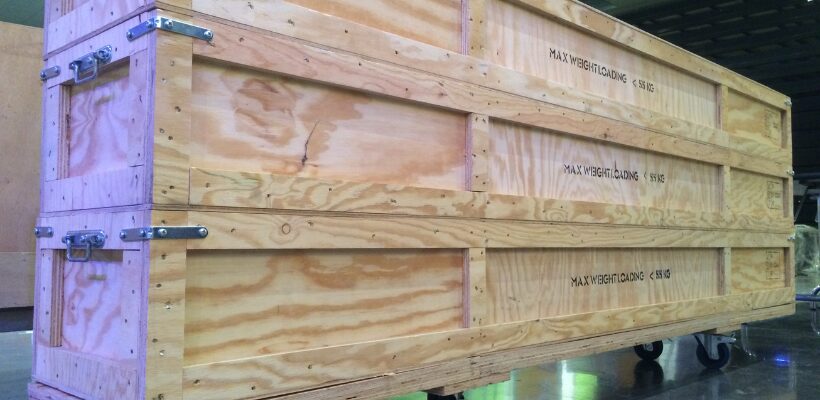
Crates can be fitted with tamper-evident seals, security bolts, or GPS tracking systems to monitor their movements. These features both deter interference and make it easier to detect and respond to any breaches.
When shipping high-value or sensitive equipment, the cost of extra security is nothing compared to the potential loss and disruption improper export crating could cause.
Custom fit for unique goods
Ensure the perfect fit to minimise movement
Not all products are uniform in shape or size; some are oversized or irregularly shaped and fragile, requiring tailored protection. Opting for standard crates may leave gaps and cause movement and damage during transit.
Custom export crates are designed to fit the dimensions and weight distribution of the product precisely. The materials can be chosen based on the product’s needs, such as shock-absorbing foam, corrosion-resistant linings, and antistatic coatings.
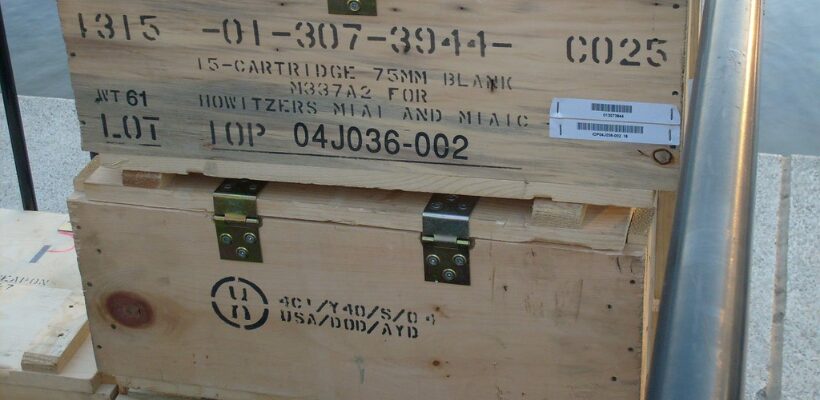
Custom export crating is ideal for products like medical equipment, industrial machinery, or fine art, goods that require extra care throughout their journey. It is also a sign of professionalism and builds customers’ confidence in your brand.
Brand reputation
Increase customer satisfaction by maintaining professionalism
Ensuring that your export crating is high-quality and well-constructed shows that your business takes international shipping seriously and is committed to delivering a reliable and damage-free experience.
Customers and international partners are more likely to trust and recommend a brand that consistently delivers goods intact and on time. Whereas, poorly packaged shipments that arrive damaged can lead to complaints, returns, and long-term damage to your reputation.
By investing in your export crating, you are demonstrating attention to detail and care, which are both key qualities that enhance customer satisfaction and brand credibility in competitive global markets.
Summary
Ensure complete safety of your goods with export crating
Whether you are transporting machinery, electronics, medical equipment, or fragile items, the right export crating ensures your goods are protected from physical damage, environmental stress, and theft. It also ensures compliance with global regulations, improves handling efficiency, and reinforces the professionalism of your brand.
In an increasingly competitive export market, where billions of pounds worth of goods are moved across borders every year, reliable and well-designed packaging helps avoid delays, reduce costly damage, and boost customer satisfaction.
Contact us at GWP today to discuss your export packaging needs and get expert advice on the best export crating solutions for your business.
About the author

Stuart boasts over 20 years of top-level experience as a packaging design engineer, in roles at Insit Moulded Packaging (IMP) and Macfarlane.
Important note
Due to the regulated nature of the topic this guide addresses (export packaging) we have taken extra steps to ensure its accuracy and reliability. You can find out more in our content policy.
All information is, to the best of our knowledge, accurate and correct at the time of publication. Please also note that, as all scenarios vary, not all information contained in this guide may apply to your specific application. There may also be specific regulations or laws, not covered within this particular guide, that apply. Please view the list of export packaging regulations for further details.
Share this article
Further reading
Products in this guide
Get in touch
Related guides
What is ISPM 15? A comprehensive guide for packaging requirements
7 advantages of using wooden export crates (and 5 disadvantages)
Export packing lists – 10 crucial details to include in 2025
Export packing guide – 7 considerations for international shipping
17 reasons to switch to returnable transit packaging
Analysis: Single trip packaging vs returnable packaging
Transit cases – how to decide which is right for you
Shipping cases: 5 options for safe transit of your goods

























